Antifungal
How to submit an article:
- Registered users can submit any published journal article that has a unique DOI (Digital Object Identifier) name or link to Research Hub.
- For example, you can paste the full DOI link:
https://doi.org/10.1109/5.771073or just the DOI name:10.1109/5.771073into the field above and click submit. - The person who is first to submit a valid article to Research Hub will forever be credited for it, and every article submission earns you +6 Research Points.
Published research studies are articles that present the findings of original research that has undergone a peer-review process and has been made publicly available in scholarly journals, books or other media.

Chemical Properties and Biological Activity of Bee Pollen
2023 Nov 25 Molecules Rodríguez-Pólit C, Gonzalez-Pastor R, Heredia-Moya J, Carrera-Pacheco SE, Castillo-Solis F, Vallejo-Imbaquingo R, et al.
Review ArticleBee pollen showcases a range of biological activities, such as anti-inflammatory, antimicrobial, and potential antiviral properties, which could contribute to the creation of innovative therapies.
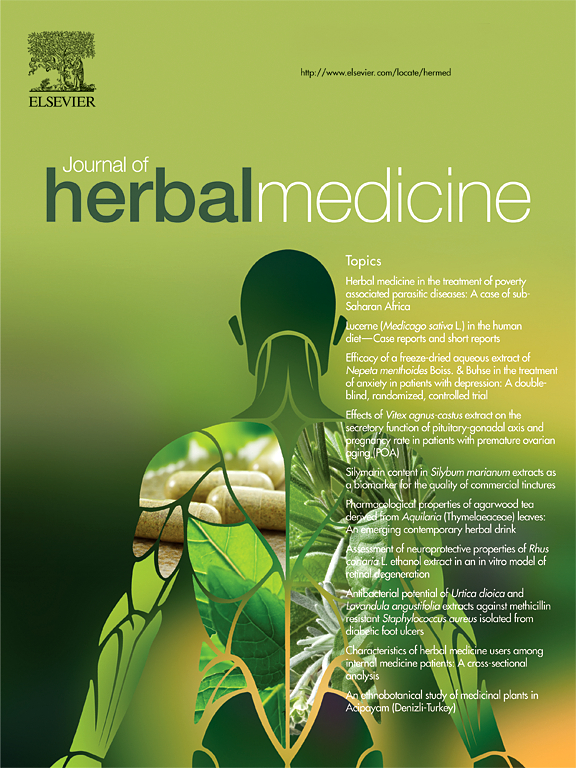
Phytochemistry and biological activities of Citrus sinensis and Citrus limon: an update
2023 Sep Journal of Herbal Medicine Zahr S, Zahr R, El Hajj R, Khalil M
Sweet orange and lemon fruits are rich in secondary metabolites and vitamins, serving as potential sources of antioxidant agents, exhibiting antibacterial, antifungal, and anticancer activities. Further studies are encouraged to explore the therapeutic usage of citrus phytochemicals.
Review Article Anticancer Antifungal Antibacterial Orange Lemon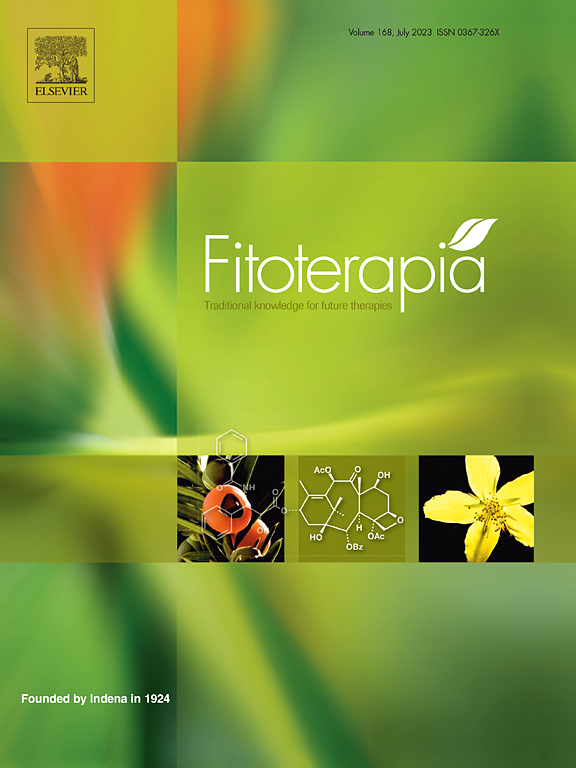
New tocopherol and acylphloroglucinol derivatives from Dryopteris crassirhizoma and their antimicrobial activities
2023 Mar Fitoterapia Hai P, He Y, Wang R, Gao Y, Wu X, Chen X, et al.
When combined with fluconazole (FLC), compound 3 showed significant antifungal activity against standard Candida albicans. Furthermore, the anti-plant pathogenic fungi and bacterial activities have been evaluated in vitro, compounds 5 and 8 showed anti-Verticillium dahlia and Sclerotinia sclerotiorum with MIC value and compounds 1 and 5 exhibited moderate antibacterial activities against Micrococcus luteus.
Network Pharmacology Guan Zhong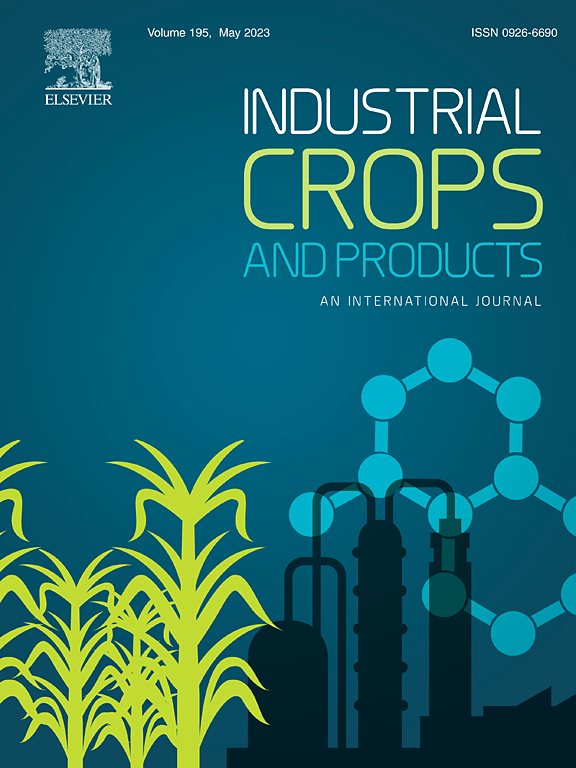
Isolation of essential oil from Mosla chinensis Maxim by surfactant-enzyme pretreatment in high-solid system and evaluation of its biological activity
2022 Dec Industrial Crops and Products Li Z, Wang H, Wang F, Li H, Cao F, Luo D, et al.
The inhibitory enzyme activity and antifungal activity of M. chinensis EO were evaluated, the results indicated that EO had no obvious inhibitory activity on α-amylase and acetylcholinesterase, but had spectral antifungal activity. In general, the SEHS-MHD developed in this work is a potential and powerful alternative to traditional techniques for the sufficient isolation of EO from natural plant and crop materials.
Network Pharmacology Xiang Ru
Antifungal Mechanisms of a Chinese Herbal Medicine, Cao Huang Gui Xiang, Against Candida Species
2022 Mar 09 Frontiers in Pharmacology Yue H, Xu X, He S, Cui X, Guo Y, Zhao J, et al.
The CHGX formula demonstrated potent antifungal activities against Candida species both in vitro and in vivo, with efficacy in treating C. albicans infection in mice without causing noticeable toxicity. The formula inhibited biofilm formation, filament development, and disrupted cell membrane integrity in C. albicans, leading to the accumulation of reactive oxygen species (ROS) and depletion of adenosine triphosphate (ATP), ultimately resulting in fungal cell death. The study highlights the potential of CHGX as a therapeutic option for Candida infections and elucidates its antifungal mechanisms involving multiple pathways, including the Ras1-cAMP pathway and mitochondrial protein Mcu1.
Experimental Study AntifungalResearch insights are moderated by the Research Hub team and offer an at-a-glance overview of interesting research findings.

2023 Molecules
Bee pollen showcases a range of biological activities, such as anti-inflammatory, antimicrobial, and potential antiviral properties, which could contribute to the creation of innovative therapies.
Review Article
Chemical Properties and Biological Activity of Bee Pollen
Rodríguez-Pólit C, Gonzalez-Pastor R, Heredia-Moya J, Carrera-Pacheco SE, Castillo-Solis F, Vallejo-Imbaquingo R, et al.
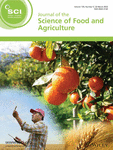
2021 Journal of the Science of Food and Agriculture
Curcumin, derived from turmeric, exhibits an extensive range of biological and medicinal properties, including anti-inflammatory, antioxidant, and antifungal qualities.
Review Article Health Benefits
Curcumin, the active substance of turmeric: its effects on health and ways to improve its bioavailability
Abd El‐Hack ME, El‐Saadony MT, Swelum AA, Arif M, Abo Ghanima MM, Shukry M, et al.
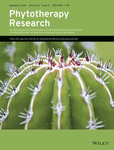
2020 Phytotherapy Research
Star anise is the source of the precursor molecule, shikimic acid, which is used in the manufacture of oseltamivir (Tamiflu®), an antiviral medication for influenza A and influenza B.
Review Article
Star anise (Illicium verum): Chemical compounds, antiviral properties, and clinical relevance
Jayanta Kumar Patra, Gitishree Das, Sankhadip Bose, Sabyasachi Banerjee, Chethala N. Vishnuprasad, Maria del Pilar Rodriguez-Torres, et al.
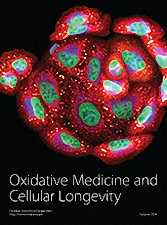
2018 Oxidative Medicine and Cellular Longevity
Honey, a natural food supplement, emerges as a potent therapeutic antioxidant with diverse medicinal effects, including wound healing, antibacterial, anti-inflammatory, antifungal, antiviral, and antidiabetic properties, suggesting its potential as a novel antioxidant in managing oxidative stress-related diseases.
Review Article Antibacterial Honey Type 2 Diabetes
Honey as a Potential Natural Antioxidant Medicine: An Insight into Its Molecular Mechanisms of Action
Ahmed S, Sulaiman SA, Baig AA, Ibrahim M, Liaqat S, Fatima S, et al.
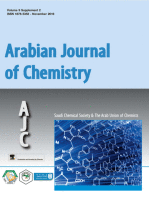
2016 Arabian Journal of Chemistry
Fennel exhibits antifungal, antibacterial, antioxidant, antithrombotic and hepatoprotective activities.
Review Article Fennel Seed
Foeniculum vulgare: A comprehensive review of its traditional use, phytochemistry, pharmacology, and safety
Manzoor A.Rather, Bilal A.Dar, Shahnawaz N.Sofia, Bilal A.Bhat, Mushtaq A.Qurishi
Review Articles
Review articles summarise and critically evaluate the current state of research on a specific topic or field by synthesising multiple primary research studies.

Chemical Properties and Biological Activity of Bee Pollen
2023 Nov 25 Molecules Rodríguez-Pólit C, Gonzalez-Pastor R, Heredia-Moya J, Carrera-Pacheco SE, Castillo-Solis F, Vallejo-Imbaquingo R, et al.
Review ArticleBee pollen showcases a range of biological activities, such as anti-inflammatory, antimicrobial, and potential antiviral properties, which could contribute to the creation of innovative therapies.

Phytochemistry and biological activities of Citrus sinensis and Citrus limon: an update
2023 Sep Journal of Herbal Medicine Zahr S, Zahr R, El Hajj R, Khalil M
Sweet orange and lemon fruits are rich in secondary metabolites and vitamins, serving as potential sources of antioxidant agents, exhibiting antibacterial, antifungal, and anticancer activities. Further studies are encouraged to explore the therapeutic usage of citrus phytochemicals.
Review Article Anticancer Antifungal Antibacterial Orange Lemon
Antioxidant Properties and Structure-Antioxidant Activity Relationship of Allium Species Leaves
2021 Nov 26 Molecules Kurnia D, Ajiati D, Heliawati L, Sumiarsa D
Allium species such as A. cepa, A. sativum, A. fistulosum, A. schoenoprasum, A. ursinum, A. flavum, A. scorodoprasum, A. vineale and A. atroviolaceum have a great role in the health field. Those contain secondary metabolites that have several bioactivities such as antioxidant, antimicrobial, antibacterial, antifungal, anti-inflammatory and others. Their bioactivities are influenced by certain structure and functional groups.
Systematic Review Meta-Analysis
Curcumin, the active substance of turmeric: its effects on health and ways to improve its bioavailability
2021 Jul 14 Journal of the Science of Food and Agriculture Abd El‐Hack ME, El‐Saadony MT, Swelum AA, Arif M, Abo Ghanima MM, Shukry M, et al.
Review Article Health BenefitsCurcumin, derived from turmeric, exhibits an extensive range of biological and medicinal properties, including anti-inflammatory, antioxidant, and antifungal qualities.

Star anise (Illicium verum): Chemical compounds, antiviral properties, and clinical relevance
2020 Jan 29 Phytotherapy Research Jayanta Kumar Patra, Gitishree Das, Sankhadip Bose, Sabyasachi Banerjee, Chethala N. Vishnuprasad, Maria del Pilar Rodriguez-Torres, et al.
Review ArticleStar anise is the source of the precursor molecule, shikimic acid, which is used in the manufacture of oseltamivir (Tamiflu®), an antiviral medication for influenza A and influenza B.
Clinical Trials
Clinical trials are research studies that involve people and are conducted to evaluate the safety and efficacy of new treatments or interventions, such as drugs, medical devices, or behavioural therapies.
Study Protocols
Published study protocols are detailed plans that outline the objectives, methodology, statistical analyses, and organisation of a research study that have been made publicly available for others to review and use as a reference.
Presentation Slides

Review Article
Bee pollen showcases a range of biological activities, such as anti-inflammatory, antimicrobial, and potential antiviral properties, which could contribute to the creation of innovative therapies.
Rodríguez-Pólit C, Gonzalez-Pastor R, Heredia-Moya J, Carrera-Pacheco SE, Castillo-Solis F, Vallejo-Imbaquingo R, Barba-Ostria C, Guamán LP

Review Article
Curcumin, derived from turmeric, exhibits an extensive range of biological and medicinal properties, including anti-inflammatory, antioxidant, and antifungal qualities.
Abd El‐Hack ME, El‐Saadony MT, Swelum AA, Arif M, Abo Ghanima MM, Shukry M, Noreldin A, Taha AE, El‐Tarabily KA

Review Article
Star anise is the source of the precursor molecule, shikimic acid, which is used in the manufacture of oseltamivir (Tamiflu®), an antiviral medication for influenza A and influenza B.
Jayanta Kumar Patra,Gitishree Das,Sankhadip Bose,Sabyasachi Banerjee,Chethala N. Vishnuprasad,Maria del Pilar Rodriguez-Torres,Han-Seung Shin

Review Article
Honey, a natural food supplement, emerges as a potent therapeutic antioxidant with diverse medicinal effects, including wound healing, antibacterial, anti-inflammatory, antifungal, antiviral, and antidiabetic properties, suggesting its potential as a novel antioxidant in managing oxidative stress-related diseases.
Ahmed S, Sulaiman SA, Baig AA, Ibrahim M, Liaqat S, Fatima S, Jabeen S, Shamim N, Othman NH

Review Article
Fennel exhibits antifungal, antibacterial, antioxidant, antithrombotic and hepatoprotective activities.
Manzoor A.Rather, Bilal A.Dar, Shahnawaz N.Sofia, Bilal A.Bhat, Mushtaq A.Qurishi
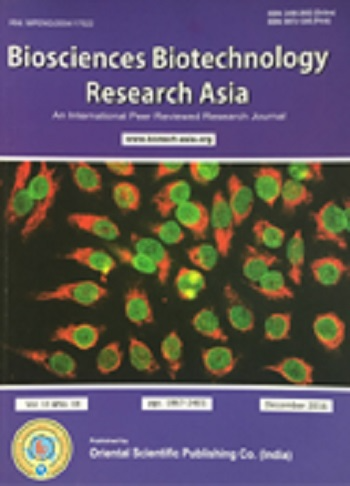
Review Article
The bioactive compounds in Chrysanthemums can be used to develop next generation, multi-functional drugs for various diseases including diabetes and prostate cancer.
Soo Cheon Chae

Punicalagin, extracted from the fruit peel of Punica granatum, displays strong antifungal activity against Candida species, especially when combined with fluconazole.
Endo EH, Garcia Cortez DA, Ueda-Nakamura T, Nakamura CV, Dias Filho BP
Executive Summary
Write an executive summary in the form of a blog article on the topic of "Research into Chinese medicine treatment for Antifungal" summarising the research below and using language that can be easily understood by patients and avoiding medical jargon using a professional and caring tone of voice.
Write an executive summary in the form of a blog article on the topic of "Researched Chinese medicine treatments for Antifungal" summarising the research below in an objective and easy to understand way, and using language that can be easily understood by patients. Group the article into Chinese medicine treatments first, followed by nutrition and other treatments. Avoid using medical jargon and use a professional and caring tone of voice.
Write me a concise but easy to understand executive summary on the topic of "Chinese medicine treatments for Antifungal" based on the following research that I will give you. Your summary should be 2 paragraphs long in Australian English spelling and include references to the studies.
A Review Article published in 2023 in the journal Molecules found that Bee pollen showcases a range of biological activities, such as anti-inflammatory, antimicrobial, and potential antiviral properties, which could contribute to the creation of innovative therapies. The methodology used in the study involved analysing a diverse array of pollen types, in combination with their various chemical compositions. The primary aim of this was to updatedly assess the bioactive constituents present in bee pollen and consider the therapeutic possibilities they present. A focus of the study was on beehive pollen since it is a rich natural source of proteins and nutrients and exhibits immense chemical and therapeutic potential. Discussion of results emphasized that the range of biological activities associated with bee pollen is truly remarkable. This activity ranges from anti-inflammatory and antimicrobial properties to potential antiviral and anticancer applications. Despite the challenge presented in fully understanding the vast array of biological properties across various pollen sources, this study has succeeded in emphasizing the potential extent of the therapeutic effectiveness of bee pollen. Its potential contribution on the path to discovering innovative therapies cannot be underestimated.
A Review Article published in 2021 in the journal Journal of the Science of Food and Agriculture found that Curcumin, derived from turmeric, exhibits an extensive range of biological and medicinal properties, including anti-inflammatory, antioxidant, and antifungal qualities. The research examines turmeric extracts, specifically focusing on curcumin, a yellow biocomponent. An array of its medicinal and biological properties is explored, particularly anti-inflammatory, antioxidant, and antifungal attributes. Traditionally used in various cultures for a range of health issues like inflammation, cough, wounds, liver disorders, and cancers, curcumin's extensive application in treating a variety of diseases potentially positions it as a significant component in modern medicine. The study also notes the successful tolerance of curcumin at high doses with no adverse effects. The analysis extends to the preferred methods for the encapsulation of curcumin, detailing techniques such as nanocomplexing, gelation, complex coacervation, electrospraying, and solvent-free pH-driven encapsulation. These methods have demonstrated effectiveness in encapsulating curcuminoids. Moreover, the chemical traits of curcumin are also highlighted, providing a basis for further potential applications in the development of health-promoting functional products.
A Review Article published in 2020 in the journal Phytotherapy Research found that Star anise is the source of the precursor molecule, shikimic acid, which is used in the manufacture of oseltamivir (Tamiflu®), an antiviral medication for influenza A and influenza B. Besides, several other molecules with numerous biological benefits including the antiviral effects have been reported from the same plant. Except the antiviral potential, star anise possesses a number of other potentials such as antioxidant, antimicrobial, antifungal, anthelmintic, insecticidal, secretolytic, antinociceptive, anti-inflammatory, gastroprotective, sedative properties, expectorant and spasmolytic, and estrogenic effects.
A Review Article published in 2018 in the journal Oxidative Medicine and Cellular Longevity found that Honey, a natural food supplement, emerges as a potent therapeutic antioxidant with diverse medicinal effects, including wound healing, antibacterial, anti-inflammatory, antifungal, antiviral, and antidiabetic properties, suggesting its potential as a novel antioxidant in managing oxidative stress-related diseases. The research extensively reviews honey's medicinal effects, emphasizing its role as a therapeutic antioxidant. The study explores various mechanisms, including the modulation of multiple signaling pathways and molecular targets. The evidence-based research underscores honey's role in alleviating diseases linked to oxidative stress. The reviewed pathways include caspase induction, cytokine stimulation, cell cycle regulation, and modulation of inflammatory markers. The comprehensive exploration of honey's therapeutic potential indicates its promise as a standalone or adjuvant antioxidant, necessitating further experimental and clinical investigation.
A Review Article published in 2016 in the journal Arabian Journal of Chemistry found that Fennel exhibits antifungal, antibacterial, antioxidant, antithrombotic and hepatoprotective activities. Fennel is a medicinal and aromatic plant with a diverse pharmacological spectrum and having considerable importance in particular to food industry. Its aroma active compounds such as anethole (and its polymers like dianethole and photoanethole) estragole, (+)-Fenchone and P-anisaldehyde have been recognised as the biologically active molecules possessing oestrogenic, acaricidal and antithrombotic activities. The phenolic molecules present in fennel have been shown to possess potent antioxidant activity in a number of experiments. These bioactive molecules in fennel can be developed as novel pharmacological lead molecules provided their bioavailability, pharmacokinetics, physiological pathways, and importance to human health are known with sufficient detail.
A Review Article published in 2016 in the journal Biosciences Biotechnology Research Asia found that The bioactive compounds in Chrysanthemums can be used to develop next generation, multi-functional drugs for various diseases including diabetes and prostate cancer. The methodology comprised a detailed literature review to understand the organic components found in dried Chrysanthemum flowers, such as alkanes, flavonoids, terpinoids, unsaturated fatty acids, and polysaccharides. These components are classified as secondary constituents within Phytochemicals. The study then focused on understanding the bioactive compounds in the Chrysanthemums, to explore their potential use in novel drug development processes. The results showed that the Chrysanthemum plant, due to its antifungal, antibacterial and anti-inflammation activities, holds great promise for biomolecules research. It was found that the phytochemical properties of Chrysanthemums can serve as the foundation for the production of non-toxic and eco-friendly drugs. This implies that these plants could play a crucial role in addressing global health concerns, such as diabetes and prostate cancer, in the future.
A published in 2010 in the journal Research in Microbiology found that Punicalagin, extracted from the fruit peel of Punica granatum, displays strong antifungal activity against Candida species, especially when combined with fluconazole. Methodology: The study made use of an activity-guided repeated fractionation process on a silica-gel column to isolate a compound from a crude hydro alcoholic extract of Punica granatum fruit peel. Upon analysis, this compound was identified as punicalagin. Its antifungal activity against Candida albicans and Candida parapsilosis was tested, alongside its combined effectiveness with fluconazole. Further tests were conducted using disk-diffusion, checkerboard assays, and time-kill curves to confirm the compound's synergy with fluconazole. Results: Punicalagin exhibited considerable antifungal activity against Candida organisms, including Candida albicans and Candida parapsilosis. When combined with fluconazole, punicalagin resulted in a two-fold decrease in the MIC for fluconazole, indicating a synergistic interaction. Further visual investigations, through scanning and transmission electron microscopy, showed that treated yeast cells exhibited an irregular budding pattern, pseudohyphae, and changes in cell morphology including a thicker cell wall, alterations in the distance between the cell wall and the plasma membrane, and the presence of vacuoles.
Moderation Tools
Topic
Sign In
Users not signed in are limited to viewing the 5 most recent items of content.
Need full article — 21 Sep 2021